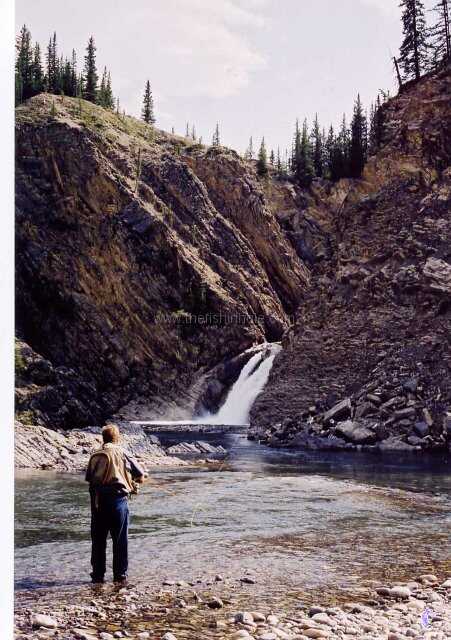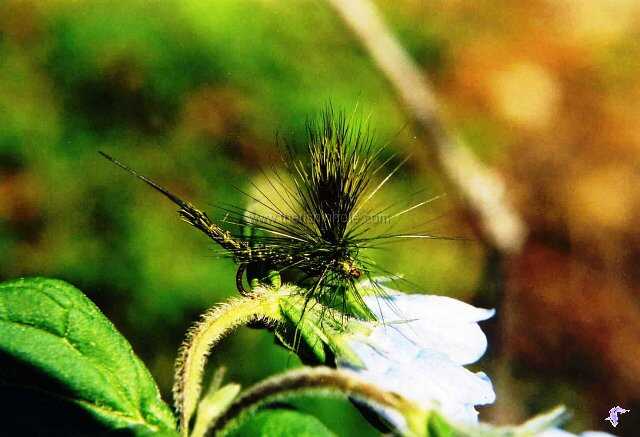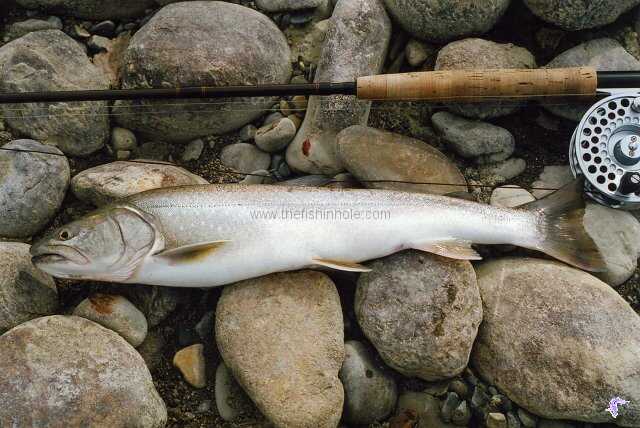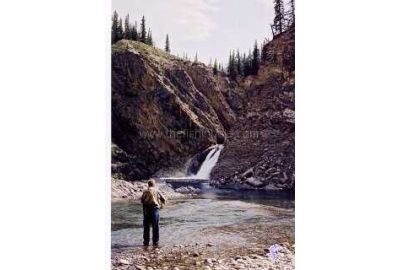In the orthodox and structured world of Alberta fly fishing, by mid-summer the days of wine and wildroses, should have been long past.That cosmic interlude when big, reclusive brown trout leave their lairs on West Country trout streams and blatantly gorge on surface insects. Sometimes in the bright light of day.
What I’m describing is that mercurial time in May and June which is sometimes known as Fly Fishers’ Christmas because often you don’t know which present to open next. The catalyst for this trout feeding frenzy – and the reason for increasing the fly fisher’s success rate exponentially – are the parades of large bugs that occur at this time of year. And if you play your cards right and your horoscope planets align there’s a good chance you will be streamside when one of these super hatches materializes.
When the emergences of big Brown Drake, Green Drakes and Hexagenia mayflies come off or egg-depositing flights of burly stoneflies, like Salmon Flies or Golden Stones, grab the trouts’ attention.
But it was on one long August weekend, when the forestry was full to overflowing with campers, quaders and horseback riders, and the South Ram River had taken on the appearance of a suburban neighborhood.Yet amongst all this hubbub a little cavalcade of olive bugs known as Green Drakes came bobbing down the icy chop of this famous Alberta mountain trout stream.Or at least they did until they reached the tail-out of a deep pool where they were being picked off one by one by feisty cutthroat trout.
Elsewhere on the river a yellow-hued and aerodynamically-challenged insect landed sporadically on the riffles of the South Ram dipping its thorax in the flow. It too met a similar fate when it appeared in any cutthroat trout’s cone of vision.


The great, limestone mountains of the Alberta’s high country shone magnificently in the hot summer sun and the fishing wasn’t so bad either as the willing cutties fell to my Extended Body Green Drake and Yellow Stimulator dry flies all afternoon. It was like June déjà vu and Christmas once more with feeling. Not only that, it wasn’t a fluke.


Alberta flyfishers – who make do on low elevation trout streams with sparse hatches of mid-summer flies – can extend their super season simply by heading for the hills. Here’s the reason why.
Anyone hiking into the alpine meadows in the middle of August in the province’s mountain national parks will be surprised and delighted to discover flowers blooming in profusion that had long since completed the show-off part of their life cycle many weeks earlier down on the flatland.
Mainly because the seasons are seriously delayed in the mountains. A combination of the extensive snow pack and the elevation means not only does spring come to the high country a lot later, the angling seasons are also significantly retarded.
The insects are only reacting accordingly.
So while anglers struggle on lower altitude trout rivers – or resort to night angling in hopes of finding a rise – the mountain rivers are at their prime from the middle of July on.To the contrary early season can be an exercise in frustration because many up slope streams are still full to the brim with gray, cold, mountain run-off.
Unless of course, they draw their source from one of the large glaciers which straddle the Continental Divide. Angling in rivers like the Athabasca, Upper North Saskatchewan and to some extent the Bow doesn’t reach its prime until September when cooler temperatures calm the glaciers down. It’s also in these higher elevation rivers where fly anglers will encounter Alberta’s precious wild native trout like Westslope Cutthroat in the south and the rare and threatened Athabasca Rainbow, which only occurs in niche habitats in the Athabasca River drainage.
Anglers will also come across Arctic grayling in many of the Athabasca and Peace River tributaries as well as the ubiquitous and plentiful mountain whitefish. An added attraction to angling the larger waters of the high country is the presence of Alberta’s number one cold water predator and official fish, the bull trout.


Large bull trout can be found in some remarkably skinny streams as they run up their “home” waters each summer to spawn. As part of the bull trout recovery program most of these creeks have been identified, protected and angling bans strictly enforced. So read the provincial fishing regulations carefully before venturing out on what appears to be a random, mountain brook. It may be closed to angling.
As well most mountain country angling is catch-and-release after the province’s progressive Fish and Wildlife Division stopped stocking flowing waters back in the 1950s and began managing them to be wild and self-sustaining.Under the government’s new “creative sentencing” guidelines judges can impose hefty fines on poachers and target the penalties specifically towards population and habitat restoration projects.
Access is always an issue when angling in the mountains but generally there’s an Alberta Forestry Service fire trail heading up most of the larger drainages. The iconic Alberta Forestry Trunk Road – also known as Alberta’s Trout Highway – runs parallel to the mountains from Grande Prairie in the north to Waterton in the south in its various forms and is an excellent conduit for getting to some fine upper elevation fishing.


High country anglers will encounter two distinct types of waters. The first are the brawling freestone rivers, spread-out and ever-evolving over large flood plains.Or tiny-perfect spring creeks that meander through open meadows or shady lodgepole pine forests.
Each has their own attractions and drawbacks.
The freestones sometime require significant hikes between pools and the currents can be swift and treacherous.So wade with an abundance of caution. But the fish, protected by a cloak of bubbly water, tend to be more willing to take your fly. Fish in the spring creeks are more alert and leery.So cautious wading for a different reason should be employed because the trout here are tucked away in the undercut banks where any heavy foot fall sends them scurrying for cover.
In Alberta’s paradoxical Rocky Mountain high country the bugs of spring become the insects of summer. And even if you don’t hit it just right, just sit back, relax and enjoy the view.
It doesn’t get much better than this.


